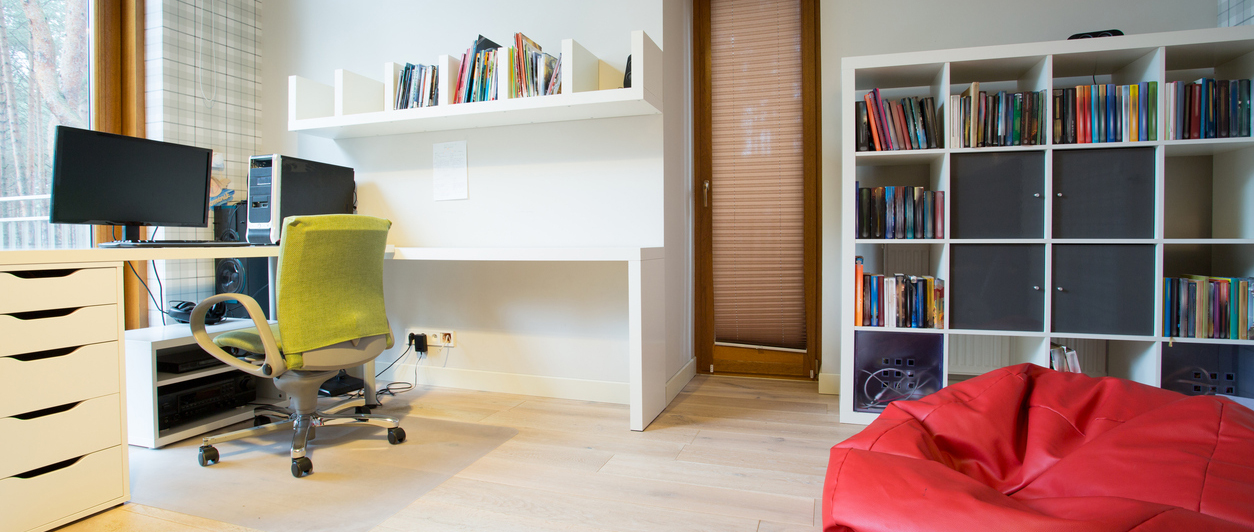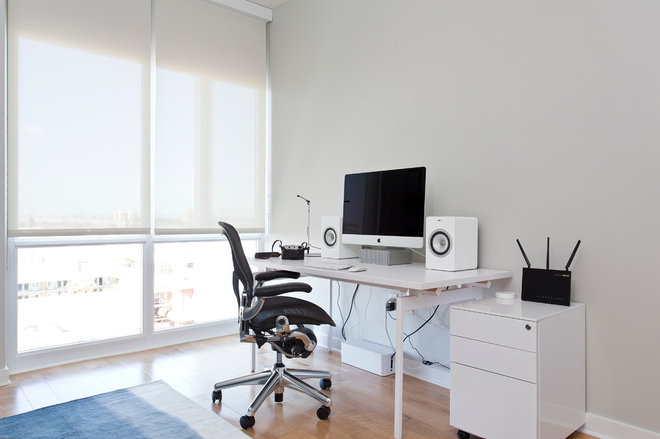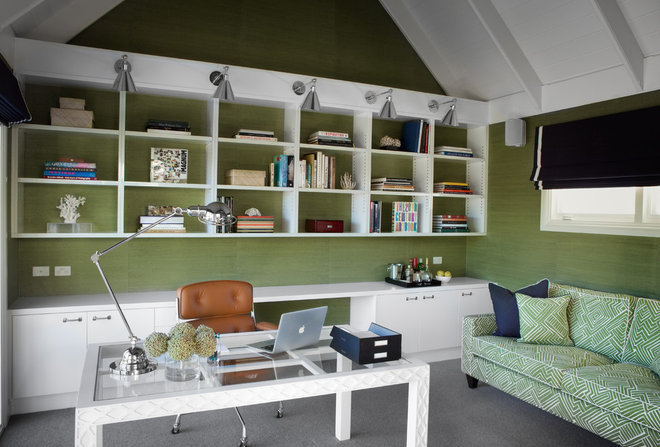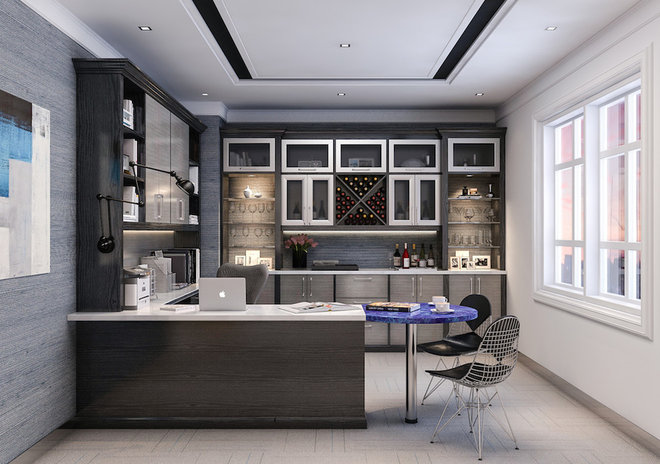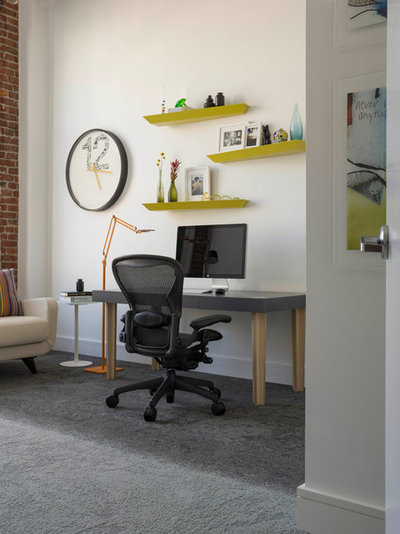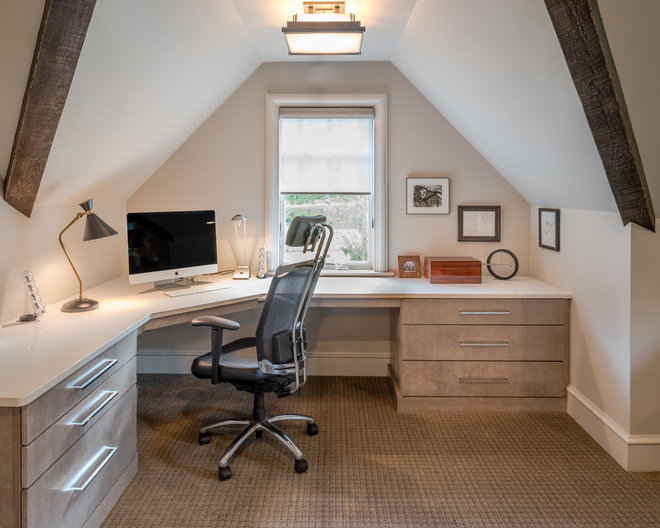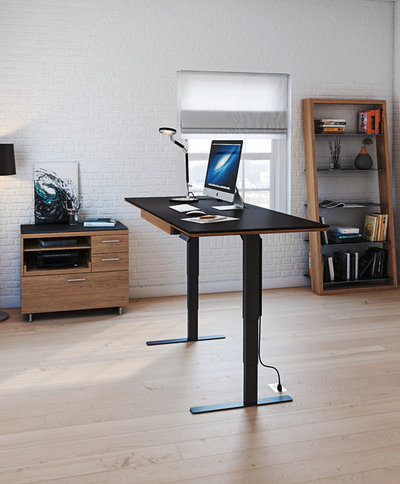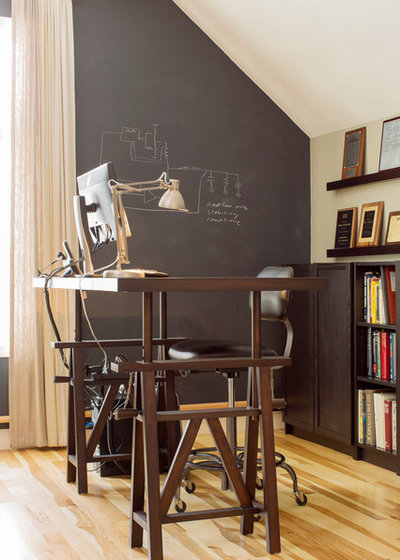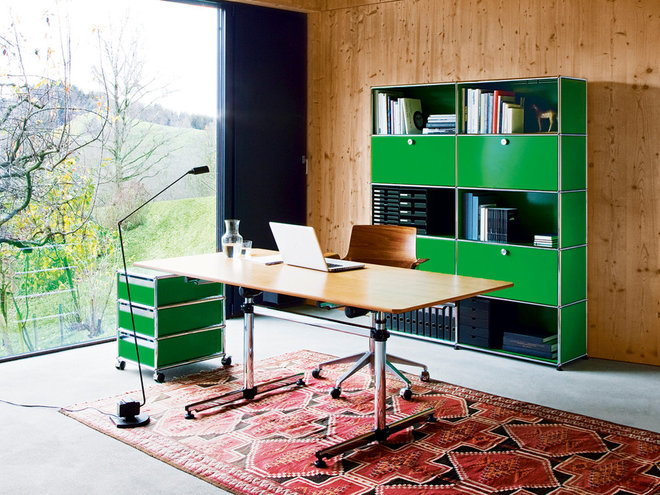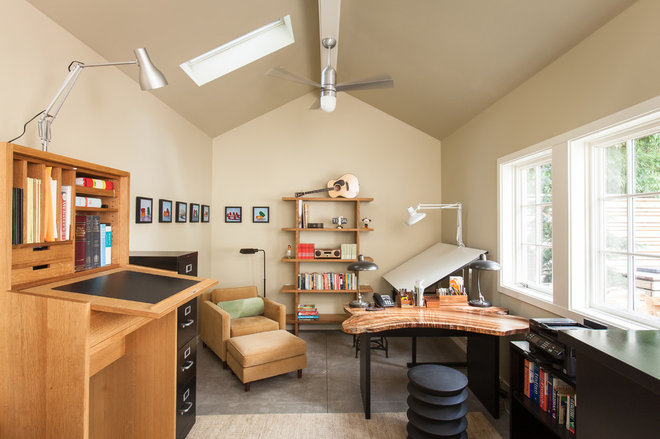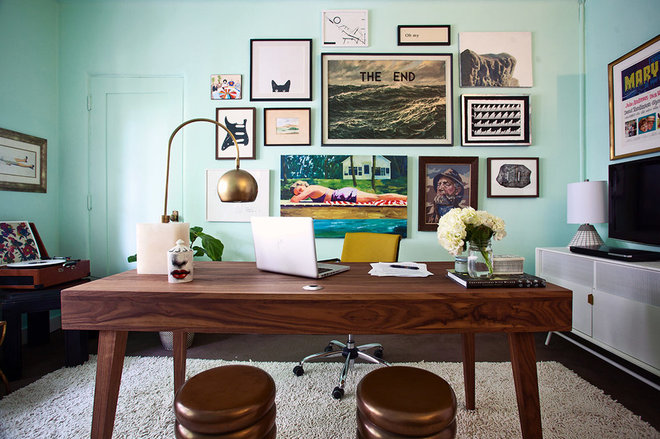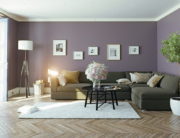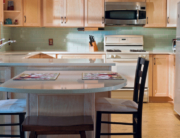Creating an ergonomic home office doesn’t have to mean sacrificing style
“Balancing comfort, function and aesthetics is sometimes a challenge, and the client needs to consider the importance of each and prioritize them,” says Leslie Bisharat, owner of Techline Studio in Rancho Cordova, California.
The average American worker spends seven hours a day in front of a computer screen, according to the American Optometric Association. Although we may assume brighter is better when it comes to productive workspaces, glare on monitors causes us to squint and strain our eyes even more. OSHA actually advises workers to direct light away from their line of sight.
This lighting plan includes natural light from the side windows and supplemental light from an adjustable desk lamp.
- Use a supplemental desk lamp that shines down on paperwork rather than the computer screen.
- Position your monitor so that windows run alongside the workstation rather than in front of or behind the screen.
- Tilt your monitor so that you don’t have to bend your neck.
Notice in this photo that the recessed lighting overhead runs parallel to the homeowner’s line of vision to the laptop screen.
If you don’t have a budget for revamping your whole home office, Hockett suggests starting with the chair. All three professionals we talked to discourage folks from merely buying something off the shelf or online without actually sitting in it for a while first. Even then, be sure that there’s a long enough warranty so that you can return or exchange the chair if aches and pains begin.
- Anti-fatigue mat (for standing) or a flexible footrest (for sitting)
- Stool to perch on
- Movable monitor arm or lift for laptop
- Adjustable keyboard platform with a padded wrist rest
This photo proves that you can have a sit-stand desk and keep your Craftsman style too. This desk can be lifted to become a standing desk (as shown) or dropped down to accommodate a sitting position. The monitor tilts, and the stool is adjustable for sitting or perching.
After you start working in your new home office, or even as you transition to different roles within your company, you might assume different work habits and positions. You might find that you pace while you take conference calls or that you no longer use your file cabinet as often as you did before. Therefore, consider an office layout that’s flexible rather than permanent. “The furniture should fit the space and be designed so that you can change things around as needs change,” Bisharat says.
Notice almost everything in this home office is on wheels. Nothing is bolted to the walls, and the shelves can be added or removed.

